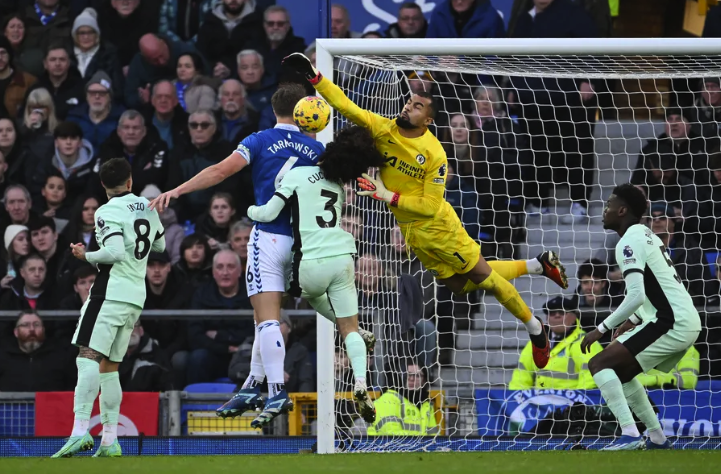
Chelsea vs. Everton:
A Tactical Examination of Two Heart-breaking Losses in a Row Chelsea’s recent exploits took a complicated turn at Goodison Park, as the Blues faced the difficult task of breaking through Everton’s unshakable low block. This game unfolded as a baffling chapter in Chelsea’s convoluted story, as the team was still suffering from the shock of their second consecutive defeat.
The low block proved to be an impenetrable hurdle when analysing the details of a game in which Chelsea suffered back-to-back defeats. The Squads Chelsea used a heavily rotated roster due to the rigorous schedule of three games in seven days. James returned to the team (albeit temporarily), Badashille partnered with Disasi, Gallagher returned from suspension, and Broja took Jackson’s place. Everton, on the other hand, stuck to their usual compact 4-4-1-1 formation. Dynamics of the Midfield
The midfield trio of Enzo, Gallagher, and Caicedo has proven to be reliable. However, there was a significant shift in how they were used in this battle compared to previous weeks, especially with Enzo and Gallagher. Enzo was assigned to the number ten position, which he disliked. This decision is perplexing, especially given that the experiment was called off a few weeks ago, recognising that Enzo—who is intended to initiate plays and receive more ball touches than Gallagher—had been mis profiled. Gallagher had 111 touches and 84 completed passes despite beginning in a deeper position. Enzo, on the other hand, completed 31 passes with 47 touches. These numbers should ideally be inverted for a team led by Gallagher, who is significantly superior to Enzo in the opposition’s box.
Plan of Attack From the start, both teams had a definite game plan: Chelsea had the responsibility of breaking down Everton, a difficult task considering their recent experience against them, while Everton intended to restrict Chelsea’s effect in transitions by establishing their traditional mid-deep block.
Everton mostly kept a mid-to-deep block, occasionally forcing Chelsea to compel them to play out from behind. They forced Chelsea to play long balls by cleverly timing their press. Chelsea had a better opportunity to use Caicedo throughout the build-up than they did. It was easy enough to avoid the journalists. Playing with Blocks Let me provide an example to demonstrate this. Caicedo grabbed Calvert-Lewin’s attention after receiving the ball from Sanchez and throwing it back to him, allowing Sanchez to find another pass. Sanchez had three alternatives at that point: a straightforward pass to Disasi, Badashille, or another passing channel to Caicedo. He went with Badashille, which aroused the attention of Calvert-Lewin’s press. Following Sanchez and Badashille’s exchange, which virtually removed Calvert-Lewin, the passing path back to Caicedo became even more beneficial. Instead of taking the easy route, Sanchez passed it to Disasi. While this is a valid alternative, especially if it serves a purpose, Disasi made a poor decision because he could have easily played it to James, allowing him to locate a free Caicedo once more. We could have easily avoided this situation if we had focused our attention on Caicedo. Attacking Strategy When Chelsea did get a chance to play, they tried to isolate Broja with the Everton CBs, but they were generally up to the task.
We were unable to capitalise even when we were allowed to play out from the back. Defensive Performance Everton’s scoring chances were restricted, especially in the first half, as Chelsea won the majority of the battles and maintained the ball in the channels for them, notably with Badashille on Calvert-Lewin. Chelsea were also able to limit Everton’s set pieces, and when balls did come in, Badashille and Disasi were typically present to deal with them. In conclusion, this game exposed some critical issues that Chelsea must address in the future. The inability to break down a low block and the mismanagement of important players are concerns that must be addressed if Chelsea is to recover from these two defeats.